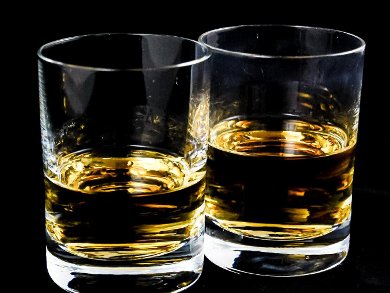Whiskey can be very expensive, and thus, forgers have devised a number of ways to fake or adulterate this liquor. They add water or cheap ethanol, or use caramel coloring to create the gold-brown tint of the real product. Testing such products to find forgeries usually requires sending the samples to a centralized laboratory capable of performing, e.g., high-performance liquid chromatography (HPLC) or mass spectrometry (MS). This is expensive and slow.
Wendell K. T. Coltro, Universidade Federal de Goiás, Goiânia, Brazil, Charles S. Henry, Colorado State University, Fort Collins, USA, and colleagues have developed a paper-based device that can be used to detect fake whiskeys quickly and cheaply based on their caramel or sucrose content. The team created round wells on a piece of paper using wax printing. The wells were then used to first combine the whiskey sample and a solution of citric acid. In a second step, solutions of glucose oxidase and NaOH, as well as a sodium phosphate buffered saline solution, were added. Finally, a solution consisting of glucose oxidase, peroxidase, 4-aminoantipyrine (4-AAP), and sodium 3,5-dichloro-2-hydroxybenzesulfonate (DHBS) was added to each well.
The detection is based on the sucrose found in caramel coloring, which is hydrolyzed in the presence of citric acid to give glucose and fructose. The enzyme glucose oxidase then converts glucose into gluconic acid and hydrogen peroxide. In the last step, the gluconic acid forms a magenta-colored quinone monamine dye with the third solution (containing 4-AAP and DHBS). The resulting color change can be seen with the naked eye. The method works particularly well for amateurishly forged whiskeys with high caramel contents.
According to the researchers, the assay is significantly cheaper than the currently used methods to detect forged whiskeys. In addition, the paper-based device can be easily used in the field by law enforcement professionals.
- A paper-based colorimetric spot test for the identification of adulterated whiskeys,
Thiago M. G. Cardoso, Robert B. Channon, Jaclyn A. Adkins, Márcio Talhavini, Wendell K. T. Coltro, Charles S. Henry,
Chem. Commun. 2017.
DOI: 10.1039/c7cc02271a


